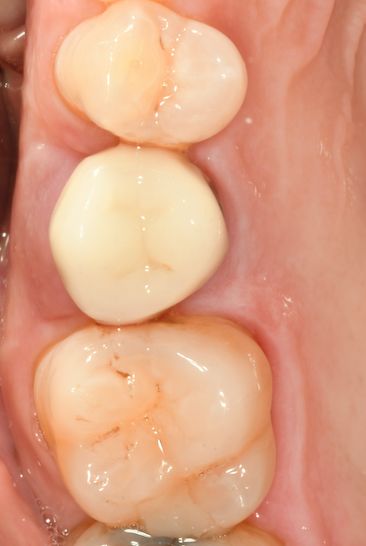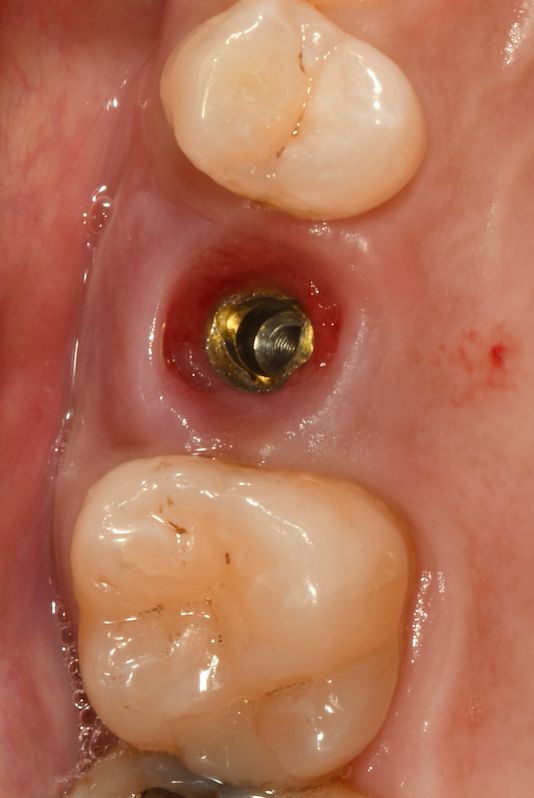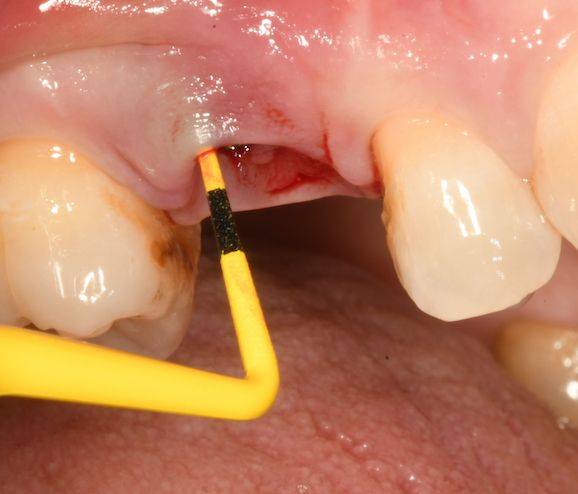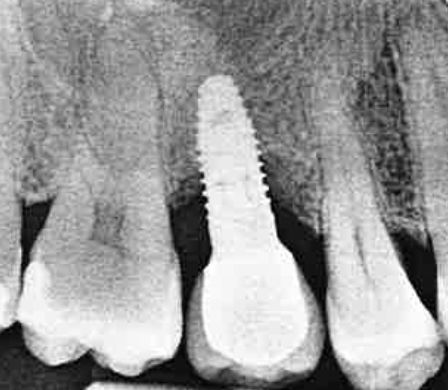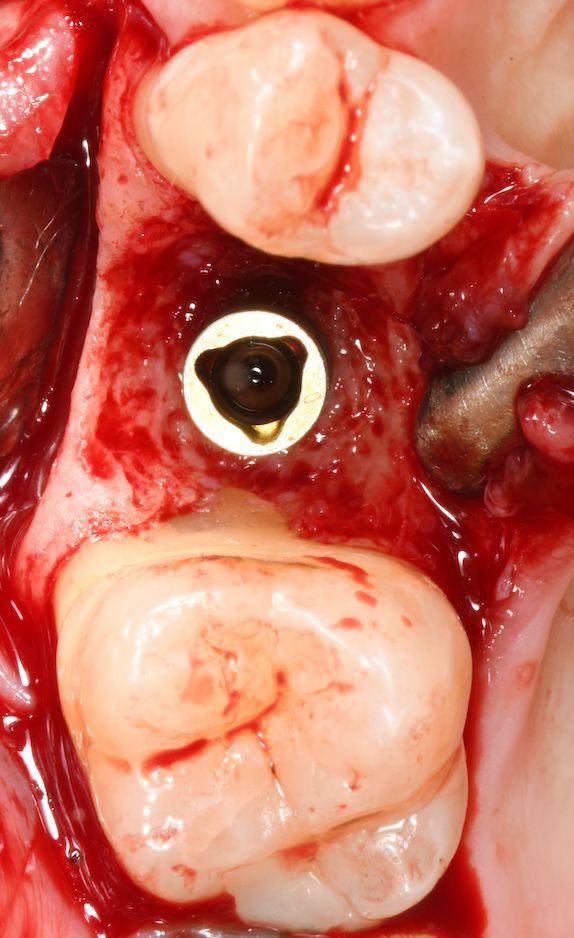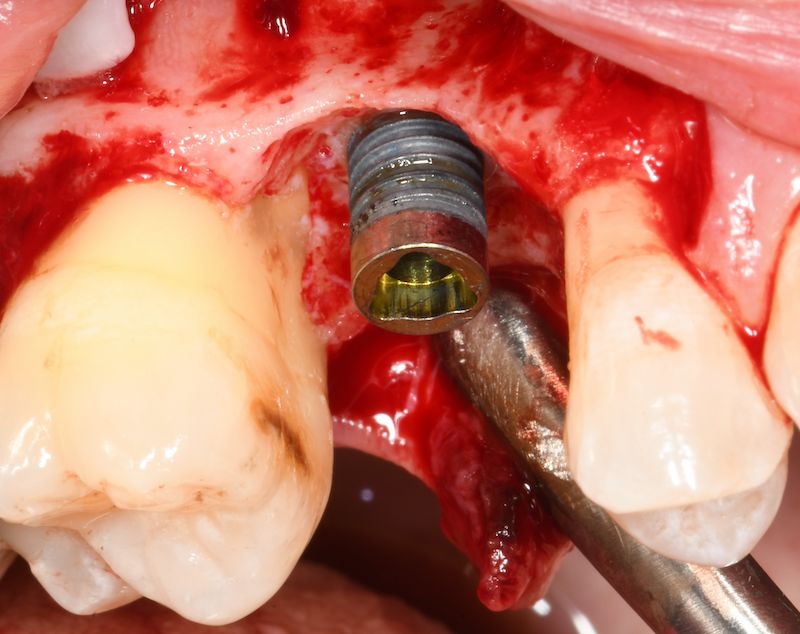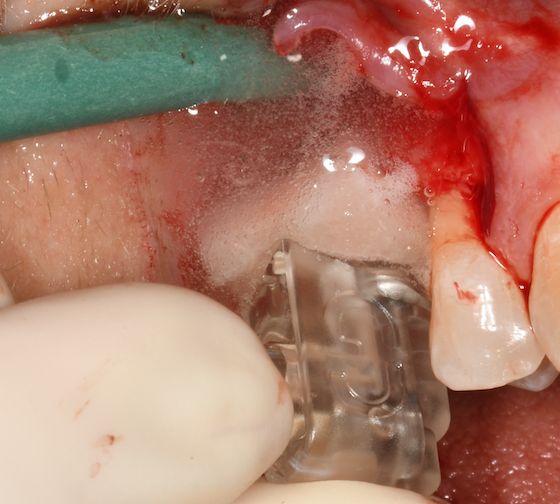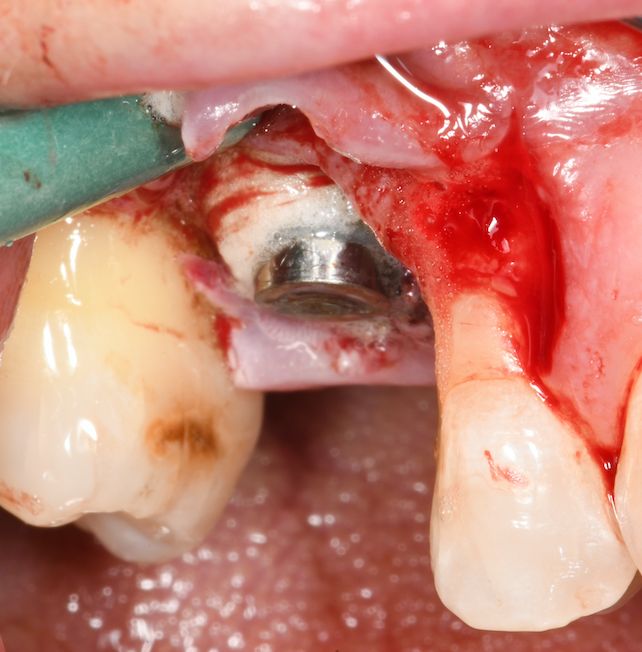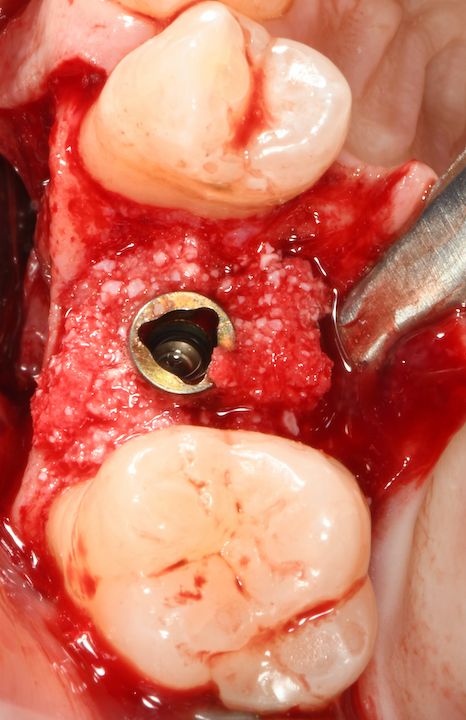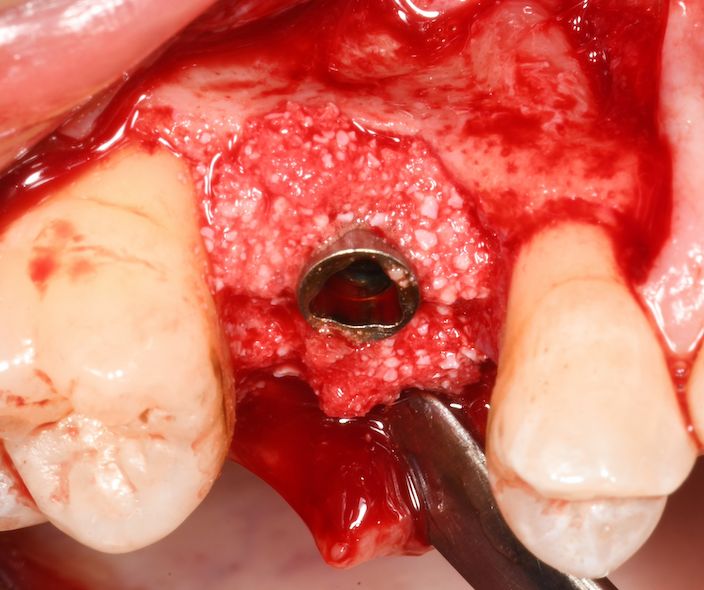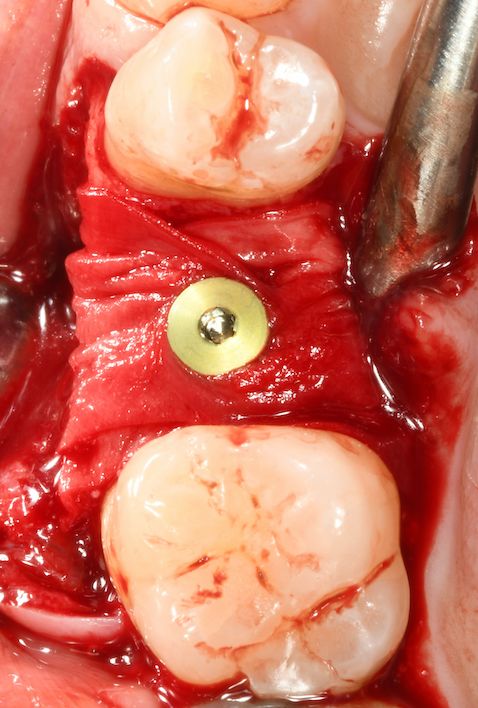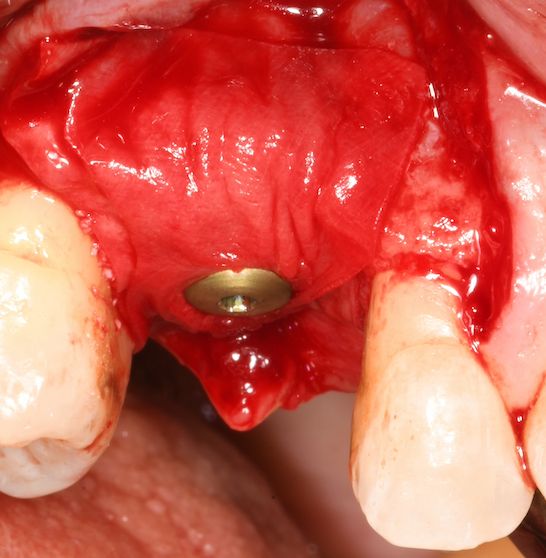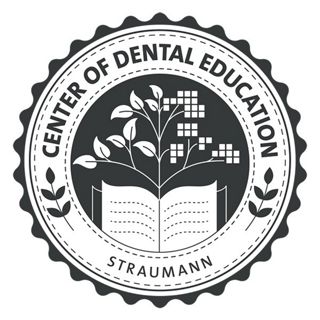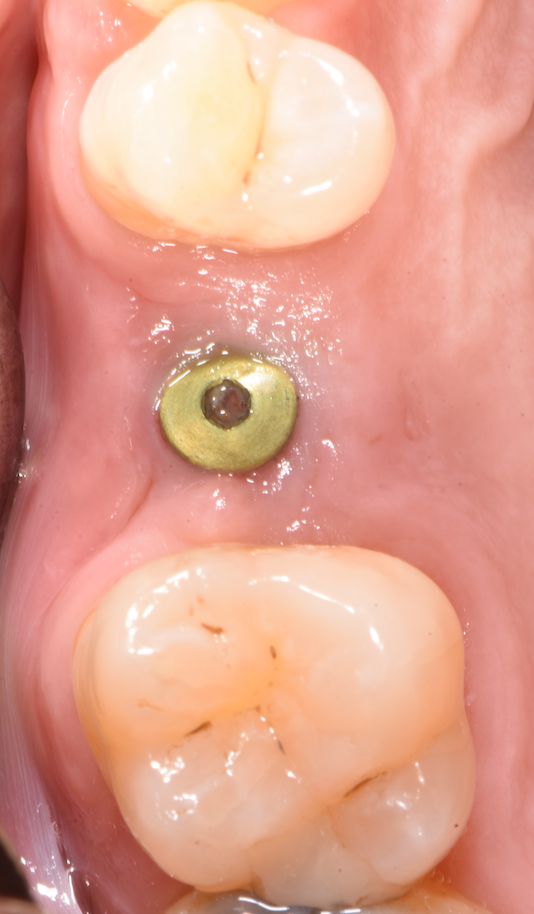Introduction
This report describes the management of peri-implantitis in a systemically healthy female patient. The second maxillary premolar had been replaced with an implant-supported restoration following sinus floor elevation and GBR. Clinical examination revealed inflammation around the implant, with radiographic evidence of a circumferential bone defect.
The patient's primary goal was to preserve the implant and restore peri-implant health. The treatment approach combined non-surgical and surgical modalities. Implant surface decontamination was performed using GalvoSurge®, an electrolytic cleaning system that removes bacterial biofilm by generating hydrogen bubbles at the implant surface through the application of a low-voltage current in an electrolyte solution. This method allows thorough and atraumatic cleaning, which is particularly useful in complex or deep defects. Reconstructive therapy with guided bone regeneration (GBR) was also carried out.
Long-term success in such cases is closely linked to the patient’s commitment to maintaining excellent oral hygiene and attending regular follow-up appointments. With ongoing compliance and appropriate maintenance care, the prognosis for preserving the implant and achieving stable, healthy peri-implant tissues remains highly favorable.
Initial situation
A systemically healthy female patient without medication presented with inflammation of the soft tissues around implant #15, expressing a desire to save the implant and restore peri-implant health. Her dental history included the loss of tooth #15, which was subsequently replaced with a dental implant placed with sinus floor elevation (SFE) and simultaneous guided bone regeneration (GBR). The implant was restored with a screw-retained single-unit crown.
Intraorally, the patient presented overall adequate oral hygiene. The mucosa surrounding the implant was edematous but showed no exposure of the implant shoulder (Fig. 1). After the crown was removed, inflammation and increased probing depth with positive bleeding on probing (BOP) were observed (Figs. 2,3).


